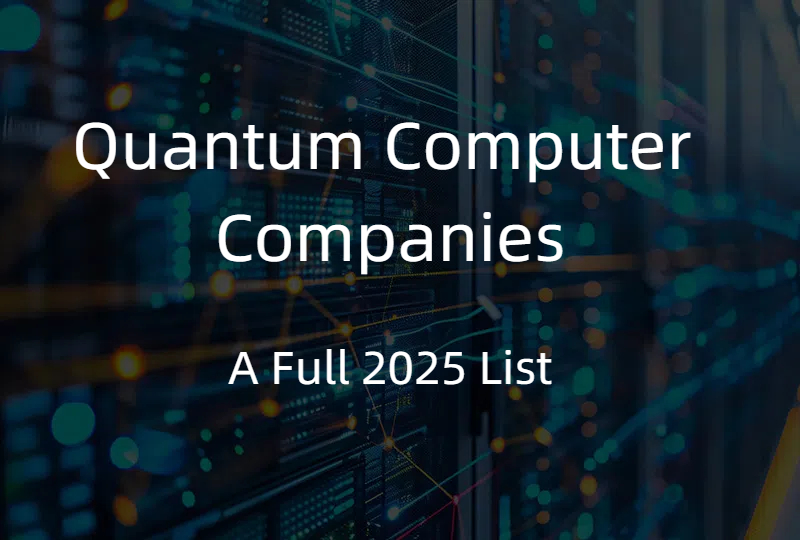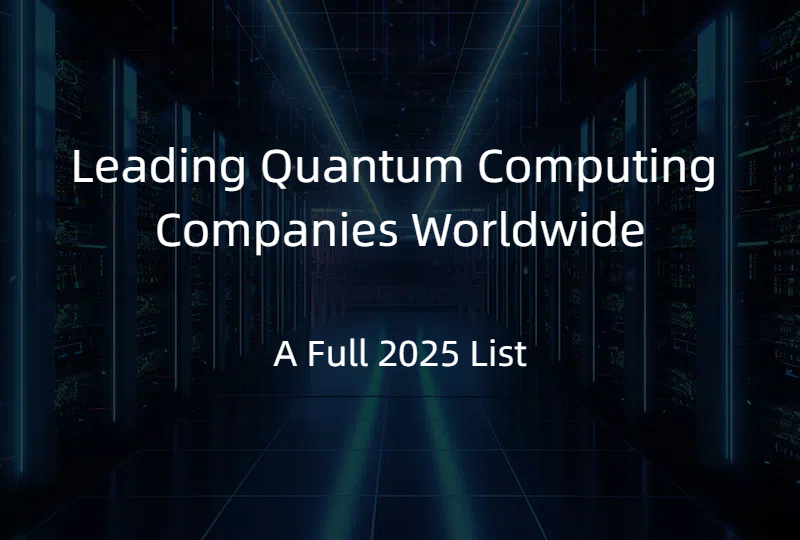Quantum Physics Breakthroughs Recognized by Nobel: From Fundamental Theory to Practical Technology
2025.11.07 · Blog Nobel Prize quantum physics
Quantum physics has been central to Nobel Prize recognition for over a century, tracing a remarkable journey from early discoveries of quantum phenomena through to today's quantum computing revolution. The 2025 Nobel Prize in Physics, awarded to John Clarke, Michel H. Devoret, and John M. Martinis for their discovery of macroscopic quantum mechanical tunneling and energy quantization in electrical circuits, represents the latest milestone in this extraordinary progression. This recognition underscores how fundamental quantum discoveries continue to drive technological innovation and reshape our understanding of reality.
Evolution of Nobel Prize Quantum Physics Breakthroughs (1921-2025)

The Foundation: Early Quantum Discoveries (1921-1965)
The Nobel Prize's recognition of quantum physics began with Albert Einstein's 1921 award for the photoelectric effect, demonstrating that light comprises discrete energy quanta—a discovery that helped establish the quantized nature of reality. This foundational understanding of energy quantization became essential to all subsequent quantum mechanics development.
The field accelerated dramatically in 1965 when Richard Feynman, Julian Schwinger, and Sin-Itiro Tomonaga jointly received the Nobel Prize for their fundamental work in quantum electrodynamics (QED). These three physicists independently solved one of quantum mechanics' most vexing problems: the mathematical infinities that plagued quantum calculations. Before their breakthrough, many quantum electrodynamics calculations produced meaningless infinite values. Their revolutionary renormalization techniques made QED calculable and precise, creating the framework that enables modern understanding of how atoms and light interact. This work laid the theoretical foundation for all subsequent developments in quantum field theory and particle physics.
Quantum Tunneling Enters the Nobel Record (1973)
Brian Josephson won the 1973 Nobel Prize in Physics for his prediction of tunneling phenomena in superconductors, describing how Cooper pairs (pairs of electrons in a superconductor) can tunnel across an insulating barrier. This theoretical prediction became the foundation upon which Clarke, Devoret, and Martinis built their Nobel Prize-winning experiments roughly a decade later.
Observing Quantum Mechanics at Macroscopic Scales (1984-1985)
The most revolutionary development came in the mid-1980s when John Clarke, Michel Devoret, and John Martinis conducted experiments at UC Berkeley demonstrating that quantum mechanical effects—previously thought to be confined to atomic and subatomic scales—could manifest in visible, palm-sized electrical circuits. Their groundbreaking experiments centered on superconducting circuits consisting of two superconductors separated by a thin insulating layer (a Josephson junction), creating conditions where billions of electrons could behave as a unified quantum entity.
Their experiments revealed two remarkable phenomena. First, they observed macroscopic quantum tunneling: the system could transition to a higher energy state without classical energy to surmount the barrier—a purely quantum effect now observable in a circuit large enough to hold in one's hand. Second, they demonstrated energy quantization: the circuit absorbed and emitted energy only in discrete quanta, precisely as quantum theory predicts.
The significance cannot be overstated. Yale physicist Steven Girvin noted: "It's a redefinition of what we mean by quantum physics. If you put yourself in the right conditions, quantum effects will emerge." This discovery shifted quantum mechanics from a phenomenon observable only in atoms to one that could be engineered and controlled in macroscopic systems—a paradigm shift that opened entirely new research directions.
Manipulating Quantum Systems: Laser Cooling and Trapping (1997)
Before practical quantum technologies could emerge, researchers needed methods to isolate and control quantum systems. Steven Chu, Claude Cohen-Tannoudji, and William D. Phillips won the 1997 Nobel Prize in Physics for developing laser cooling and trapping techniques. Their methods used laser light to slow atoms to microkelvin temperatures (millionths of a degree above absolute zero) and trap them in "optical molasses"—regions where carefully configured laser beams create forces that confine atoms.
These techniques proved revolutionary because they enabled controlled preparation and manipulation of quantum states at unprecedented levels of precision. The laser cooling techniques developed by these laureates became essential prerequisites for the quantum computing and quantum simulation advances that followed.
Discovering New States of Matter: Bose-Einstein Condensation (2001)
Building on laser cooling advances, Eric Cornell, Wolfgang Ketterle, and Carl Wieman won the 2001 Nobel Prize in Physics for achieving Bose-Einstein condensation (BEC) in dilute atomic gases. At temperatures just billionths of a degree above absolute zero, they cooled alkali atoms until they occupied the same quantum ground state—a phenomenon Einstein had predicted theoretically in 1924 but had never been experimentally realized.
This achievement represented the first artificial creation of a new state of matter where atoms behave collectively as a single quantum entity, much like Cooper pairs in superconductors. The implications extended far beyond fundamental physics: BEC discovery opened new research frontiers in precision measurement, quantum simulation, and quantum information processing.
Understanding Superconductivity and Superfluidity (2003)
Alexei Abrikosov, Vitaly Ginzburg, and Anthony Leggett shared the 2003 Nobel Prize in Physics for pioneering theoretical contributions to understanding superconductors and superfluids. Their work explained how materials can conduct electricity without resistance and how certain liquids can flow without viscosity—quantum phenomena of extraordinary practical importance.
Anthony Leggett's contributions proved particularly relevant to the 2025 laureates' work. In the late 1970s, Leggett theoretically predicted that macroscopic quantum tunneling should be observable in superconducting circuits—a prediction that inspired Clarke, Devoret, and Martinis to design their landmark experiments. Leggett's theoretical groundwork made the 1984-1985 experimental breakthroughs possible.
Validating Quantum Mechanics: Quantum Entanglement (2022)
The most recent prior quantum physics Nobel Prize went to Alain Aspect, John Clauser, and Anton Zeilinger for experimental validation of quantum entanglement. These three physicists proved through meticulous experiments that particles can exhibit instantaneous correlations across vast distances—"spooky action at a distance" as Einstein famously called it—violating Bell's inequality and confirming quantum mechanics' most counterintuitive prediction.
Their work began with John Clauser's 1972 experimental test of Bell's inequality using entangled photons, moved through Alain Aspect's landmark 1981-1982 experiments that closed critical experimental loopholes, and progressed to Anton Zeilinger's demonstrations of long-distance entanglement across hundreds of kilometers. By 2015, multiple research groups achieved loophole-free Bell tests that definitively ruled out classical hidden variable theories.
The 2022 Nobel Prize represented explicit recognition that quantum entanglement—once considered merely philosophical—is a real, measurable phenomenon with practical applications in quantum cryptography, quantum communication, and quantum computing.
From Theory to Application: The 2025 Recognition
The 2025 Nobel Prize to Clarke, Devoret, and Martinis completes a remarkable arc: their discovery of macroscopic quantum tunneling transformed from fundamental physics into the theoretical foundation for modern superconducting quantum computing. Martinis himself played a direct role in this translation, leading quantum computing research at Google that culminated in the December 2024 announcement of Willow, a 105-qubit superconducting processor demonstrating exponential error correction—the "break even" point needed for practical quantum computing.
Similarly, Devoret contributed foundational work on circuit quantum electrodynamics (circuit QED) at Yale, developing the transmon qubit in 2002—a superconducting qubit design that became foundational for quantum computers at Google, IBM, and worldwide research institutions.
The Broader Impact: Quantum Technologies Emerge
The cumulative effect of these Nobel Prize-recognized breakthroughs has catalyzed a quantum technology revolution. According to the World Economic Forum, quantum technologies based on these principles could generate economic value between $900 million and $2 trillion by 2035.
Currently, multiple quantum computing platforms leverage Nobel Prize-recognized discoveries:
Superconducting qubits (based on Clarke, Devoret, and Martinis's principles) dominate current commercial quantum computing with leaders including Google, IBM, and emerging startups. These systems achieve gate fidelities exceeding 99.9% and coherence times up to 100 microseconds, enabling increasingly sophisticated quantum algorithms.
Trapped-ion quantum computers (extending laser cooling techniques from the 1997 Nobel laureates) enable room-temperature operation and high-fidelity operations, with companies like IonQ reporting $20.7 million in revenue for Q2 2025.
Neutral atom quantum computers (leveraging both laser cooling and quantum information principles) represent emerging platforms pursued by companies including QuEra and Pasqal, the latter notably led by 2022 Nobel laureate Alain Aspect.
Quantum sensors exploiting Josephson junctions detect minute magnetic fields with extraordinary precision—enabling applications from medical imaging to fundamental physics experiments.
Applications Spanning Multiple Domains
The convergence of these Nobel Prize-validated discoveries enables quantum technologies addressing diverse challenges. In pharmaceutical development and materials science, quantum computers simulate molecular structures that remain intractable for classical approaches—IBM and Mercedes-Benz collaborate on quantum simulation for battery research, while major pharmaceutical companies partner with quantum startups. In finance and logistics, quantum optimization promises solutions to problems requiring prohibitive classical computation time. In cryptography, quantum computers could potentially break current encryption while simultaneously enabling quantum-resistant security. Artificial intelligence and fundamental physics represent emerging application areas.
The Investment Momentum
Recognition of quantum physics breakthroughs has translated into substantial investment. In 2024 alone, quantum computing startups attracted USD 2.2 billion in venture capital funding—quadrupling investment levels from five years earlier. By mid-2025, total equity funding exceeded USD 3.77 billion, with the first half of the year accounting for USD 1.25 billion—more than double the equivalent 2024 period. This capital reflects genuine confidence that Nobel Prize-validated quantum principles can be engineered into practical, profitable technologies.
The Historical Perspective
The 2025 Nobel Prize represents the 119th physics Nobel and reflects a century-long progression from Einstein's 1921 recognition of energy quantization through to today's manipulation of macroscopic quantum systems for computation and sensing. Each breakthrough built upon its predecessors: Einstein's photoelectric effect enabled quantum theory; QED calculations proved quantum mechanics' predictive power; laser cooling and trapping made quantum state preparation possible; Bose-Einstein condensation demonstrated new quantum states; quantum entanglement vindicated quantum mechanics' most counterintuitive predictions; and macroscopic quantum tunneling showed that all these phenomena could be harnessed in engineered systems.
The 2025 recognition by the Royal Swedish Academy of Sciences explicitly acknowledges this lineage. The Nobel Committee noted that the laureates' work was "made possible by the work of Anthony Leggett and Brian Josephson—who laid the groundwork for their work on tunneling in superconducting circuits." This acknowledgment of scientific continuity reflects how Nobel Prizes increasingly recognize not isolated discoveries but rather breakthrough moments within long research arcs spanning decades.
Conclusion: From Philosophy to Technology
The recognition of quantum physics by the Nobel Prize demonstrates how fundamental scientific inquiry, pursued without immediate practical application, ultimately transforms entire industries. Over the past century, quantum physics progressed from philosophical puzzle to experimentally validated scientific principle to engineered technology underlying next-generation computing and sensing systems.
The 2025 Nobel Prize to Clarke, Devoret, and Martinis exemplifies this progression. Their 1984-1985 experiments were motivated by pure curiosity about whether quantum mechanics operates at macroscopic scales. Four decades later, their discoveries form the theoretical and practical foundation for quantum computers that major technology companies are investing billions to develop, enabling applications from drug discovery to materials science to optimization.
As international research communities and global technology companies pursue quantum computing's commercialization, the foundational achievements recognized by past and present Nobel Prizes remain central to the field's progress. The award's recognition of quantum breakthroughs validates both the importance of curiosity-driven research and the remarkable trajectory by which fundamental physics discoveries catalyze technological revolutions.
Featured Content






